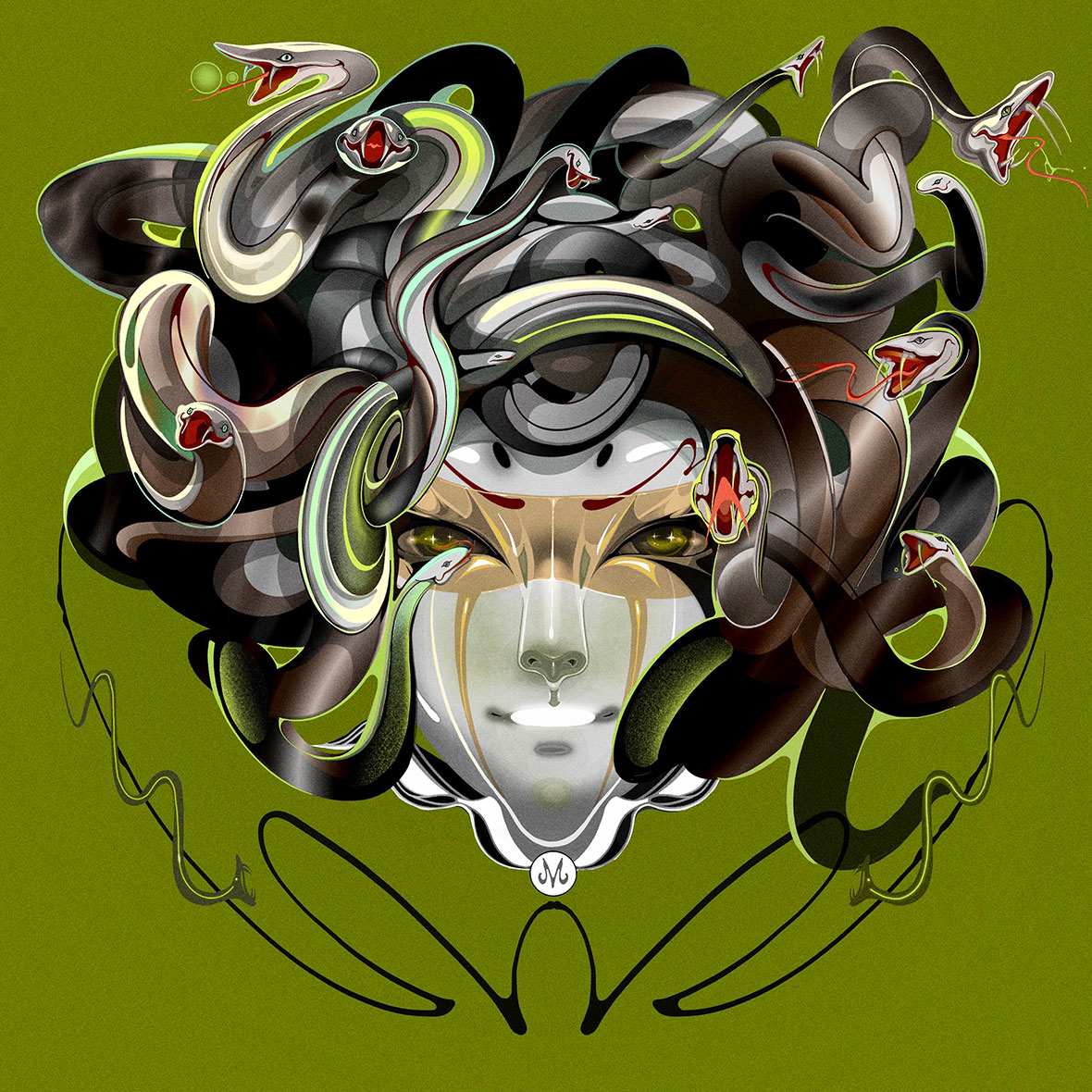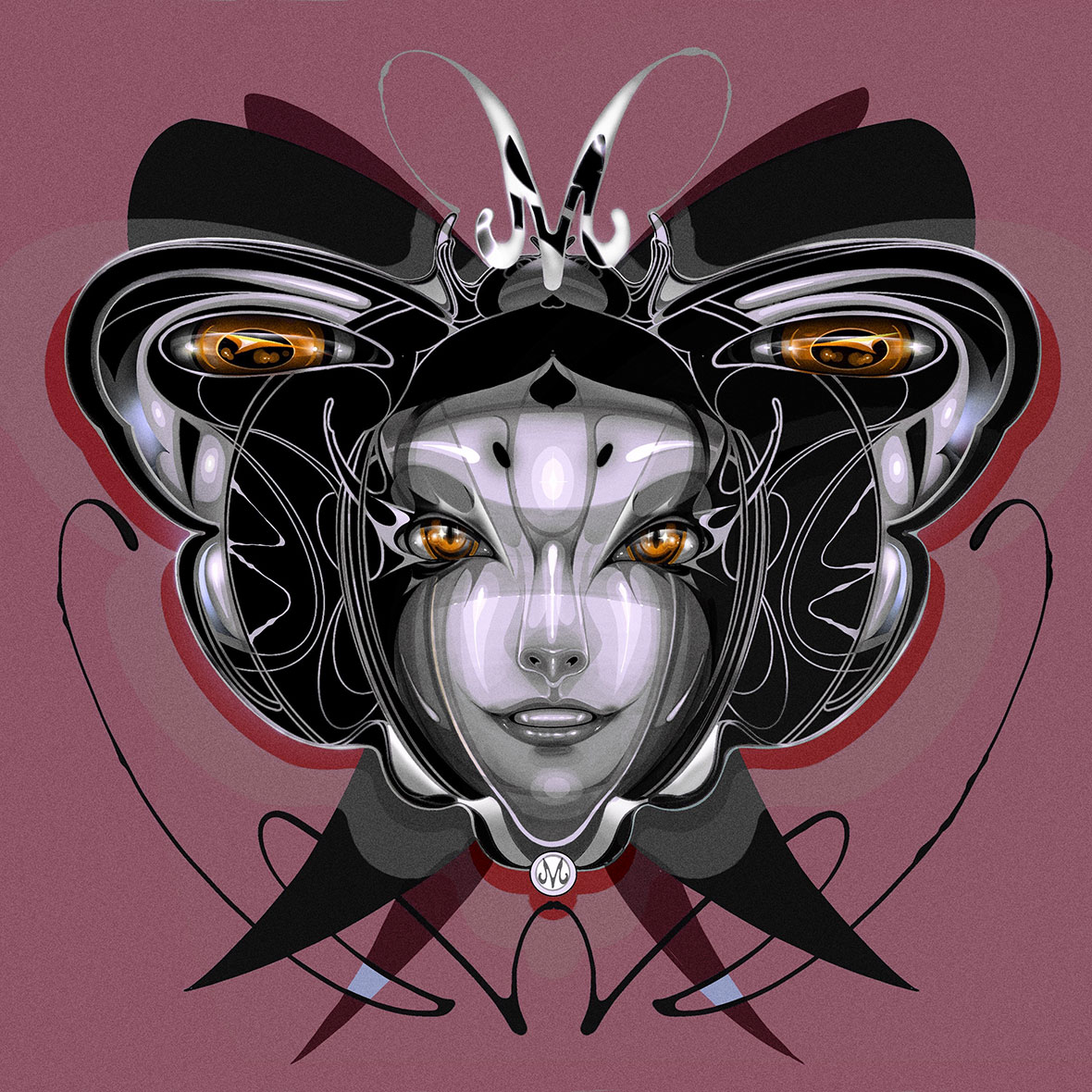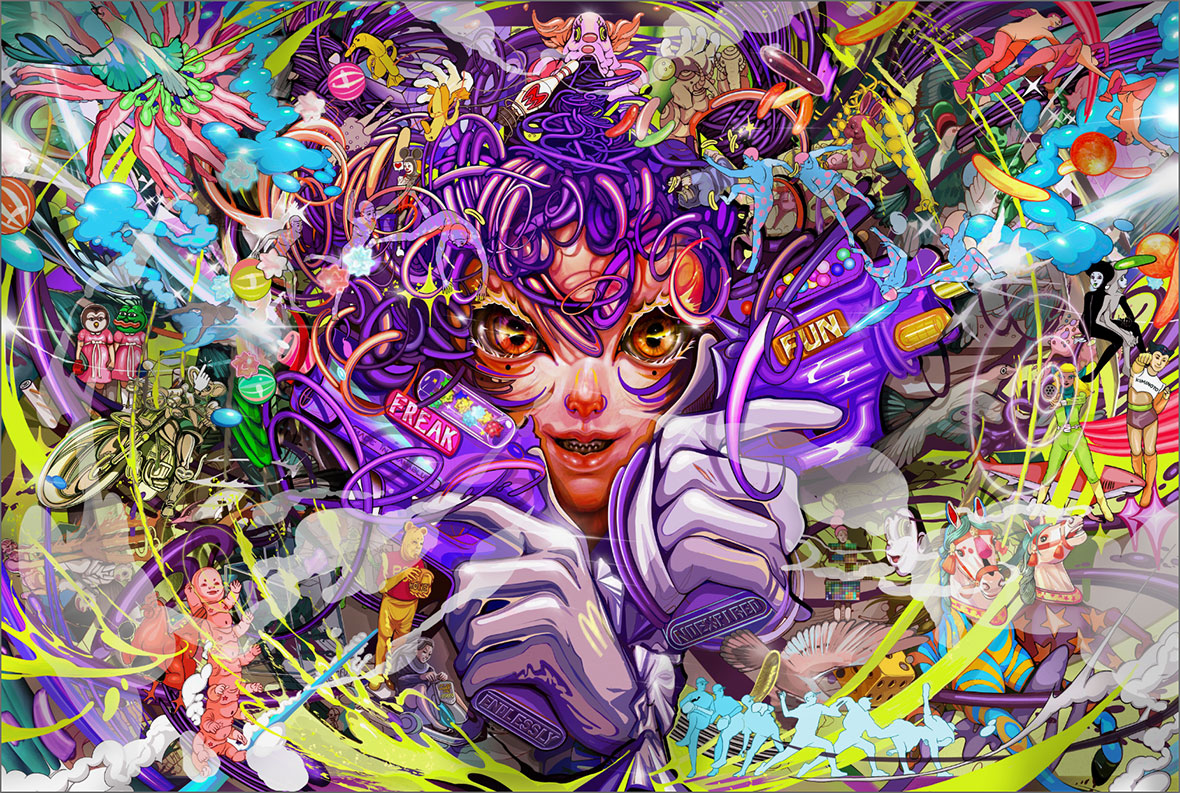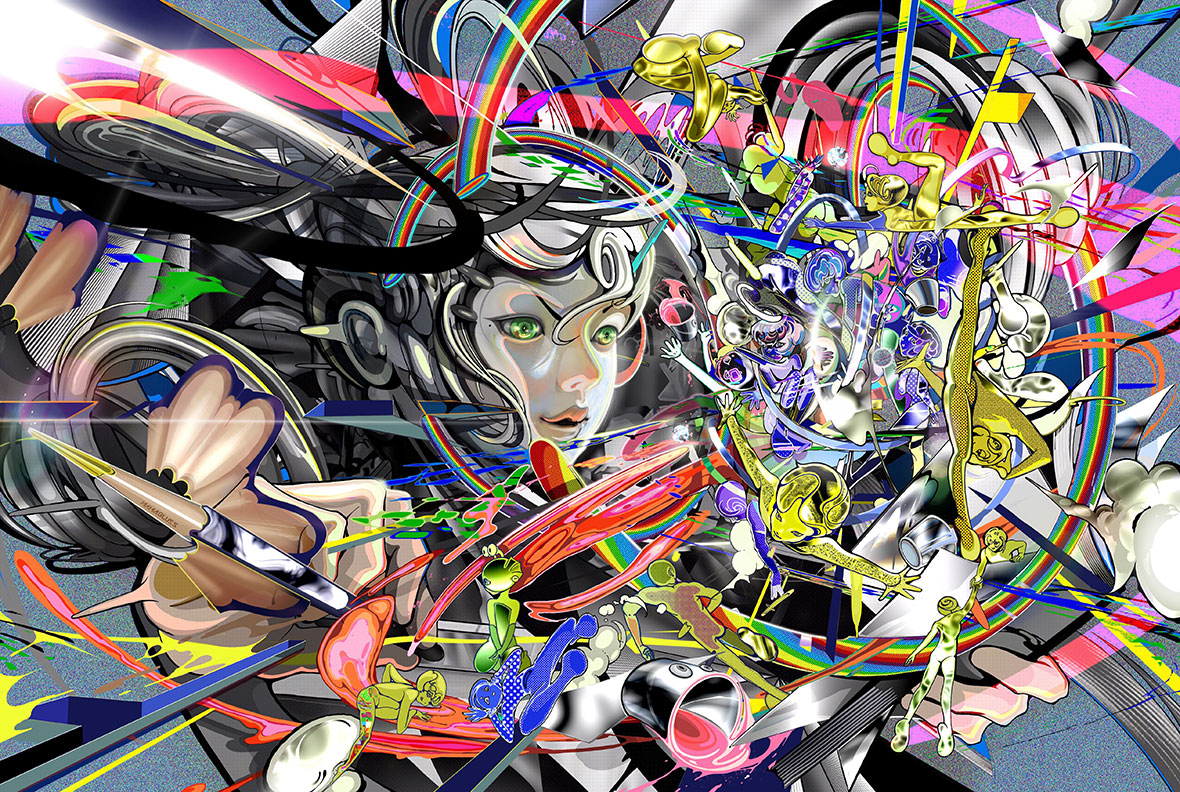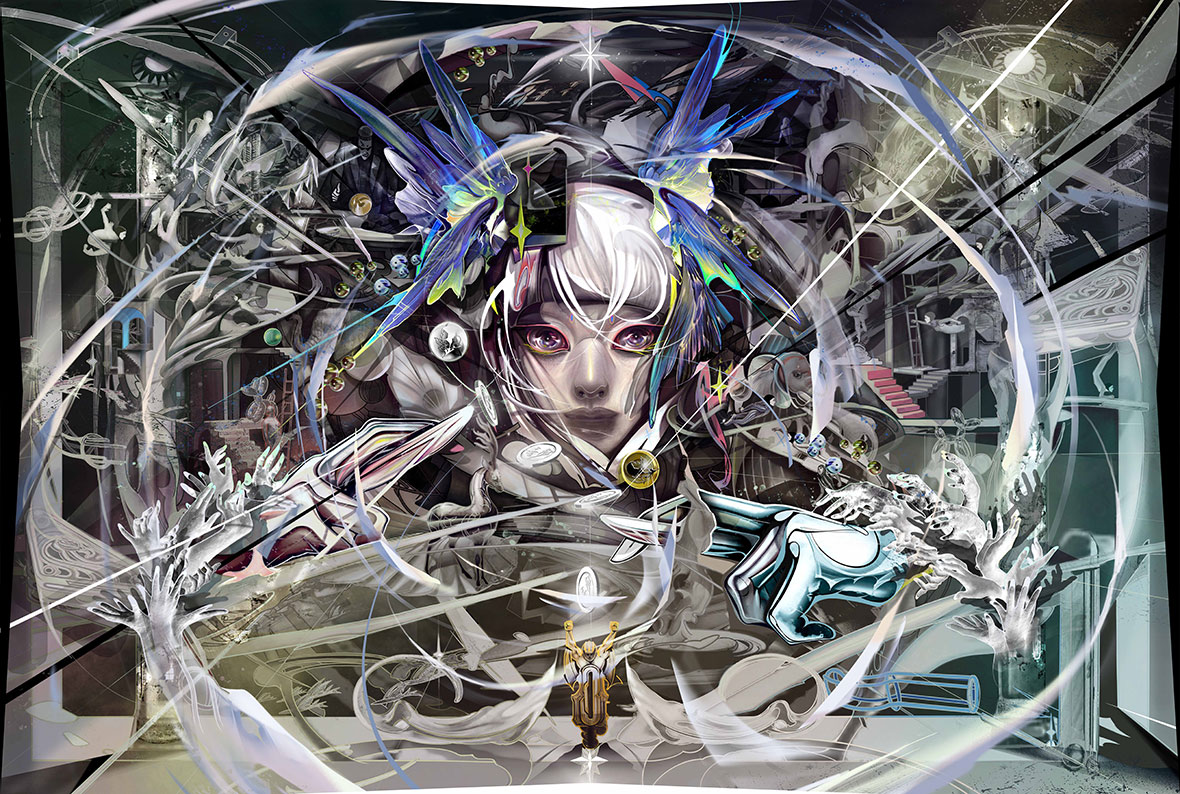
The artwork of Fawalai Fai is otherworldly. It’s a universe conjured from the digital ether. Her main characters—suspended faces with big eyes and disembodied hands—seem to live in the cloud, digital natives created for the coming dawn of a virtual reality more real than our own. They’re surrounded by a stream of consciousness, each little thought and feeling scripted by a dynamic algorithmic, but translated into swirling visuals designed for human consumption.
Fawalai Fai 别名 Mamablues,其作品科幻离奇,呈现出一个由数字以太构成的宇宙。她笔下的角色往往以上半身特写为主,大眼睛、悬浮在半空的双手,仿佛是一个个生活于数字云层之间的原住民,她们绝非来自现实。此外,各种意象不明的元素环绕于人物左右,每一个细小的思绪和情感都按照动态的算法编写成脚本,又转化成引人入胜的漩涡般视觉效果。
Fai was born and raised on the outskirts of Bangkok in Min Buri. It’s a district known for its fish market and Islamic and Chinese communities. Fai is half Chinese herself. “There’s no art there,” she says, adding that her parents weren’t too happy about her artsy leanings. But whenever they would go to the mall, she was allowed to pick out one thing for herself, and she would make a beeline straight to the comics.
Those early manga influences are definitely still present in her artwork, as evidenced by her character designs. But there’s another significant inspiration that’s a lot less obvious: mimes. “I would see them at festivals and amusement parks and it always stuck with me,” she recalls. “I recreate that with faces that make eye contact with my audience and use hands movements to create movement. It’s the idea of life as a performance. We all play our little roles.”
Fawalai 在位于曼谷郊区的民武里长大,这里以鱼市场、伊斯兰教和华人社区而闻名(她自己也有一半华人血统)。“那里没有艺术,”她说,并表示她的父母起初并不支持她对艺术的兴趣。而每次逛商场,父母让她自己挑一样喜欢的东西时,她都会毫不犹豫地跑去买漫画书。
从她的作品中,能明显看到早期的漫画影响,譬如她的角色设计。但她承认自己的创作灵感却是来自哑剧。她回忆道:“我通常都是在节日活动和游乐园里看哑剧,每场都印象深刻。作品中,角色直视观众,以手部和肢体动作传达故事内容。其背后的理念告诉观众:生活就是一场表演,每个人都扮演着自己的小角色。”
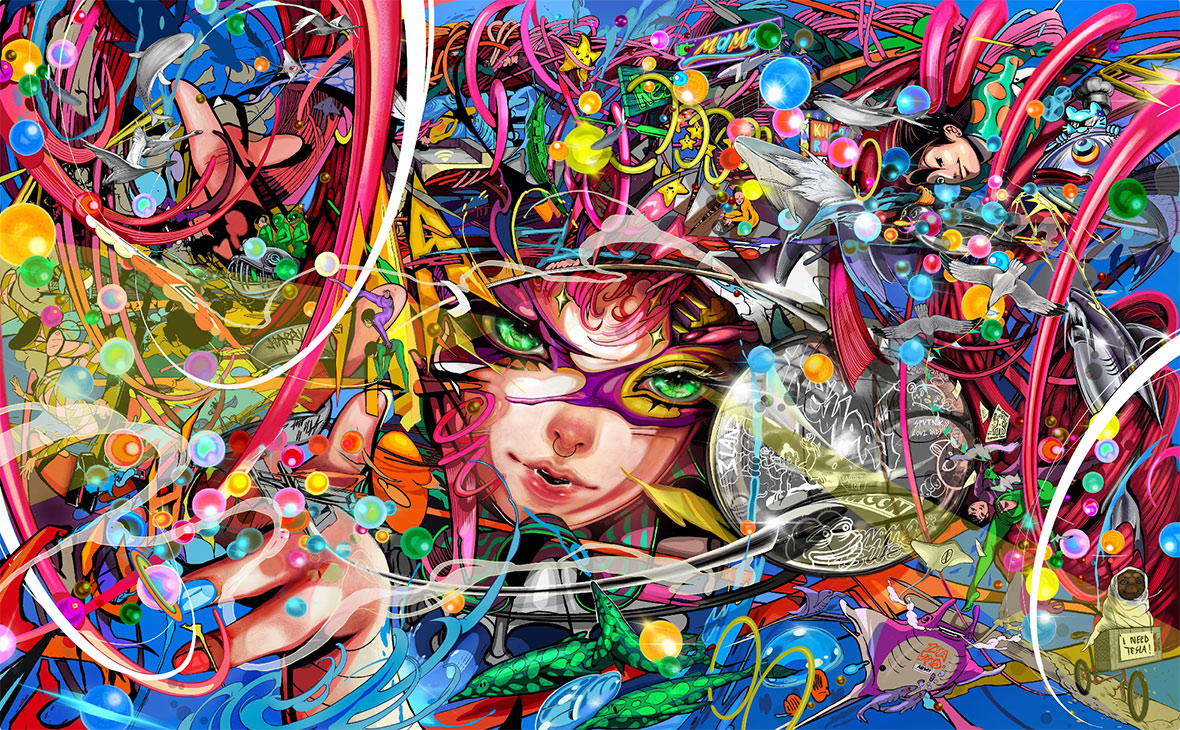
When Fai moved away to university, she became captivated with local street artists like Alex Face, who was her senior at school. Her roommate was studying fine art and doing street art, so she would go with them when they painted. She focused strictly on street art for about five years, only painting canvases when they were commissioned work. At first, her murals were painted with aerosol, but she eventually decided to switch it up for brushes, which she still uses to this day. “I learned a lot from the local street art community,” she says. “Not necessarily in a style sense, but in terms of techniques and marketing myself. They freely offered advice whenever I would ask.”
当 Fawalai 离家去大学念书,她开始关注当地的街头艺术家,这其中就有她的同校学长 Alex Face。她当时的室友所读的专业是纯艺并自己创作街头艺术,他们经常一起去很多地方,Fawalai 用心地关注他们的创作。长达五年的时间,她一直专注于街头艺术创作,只有接到客户委托工作时才在画布上绘画。刚开始,她用气溶胶来创作壁画,后来又决定换成画笔,并一直延续至今。她说:“我从本地的街头艺术社区学到了很多东西。不只是风格,还包括创作技巧和营销方式。身边同学为我提供了不少帮助,每次我有疑问的时,他们都非常乐意提供有用的意见。”
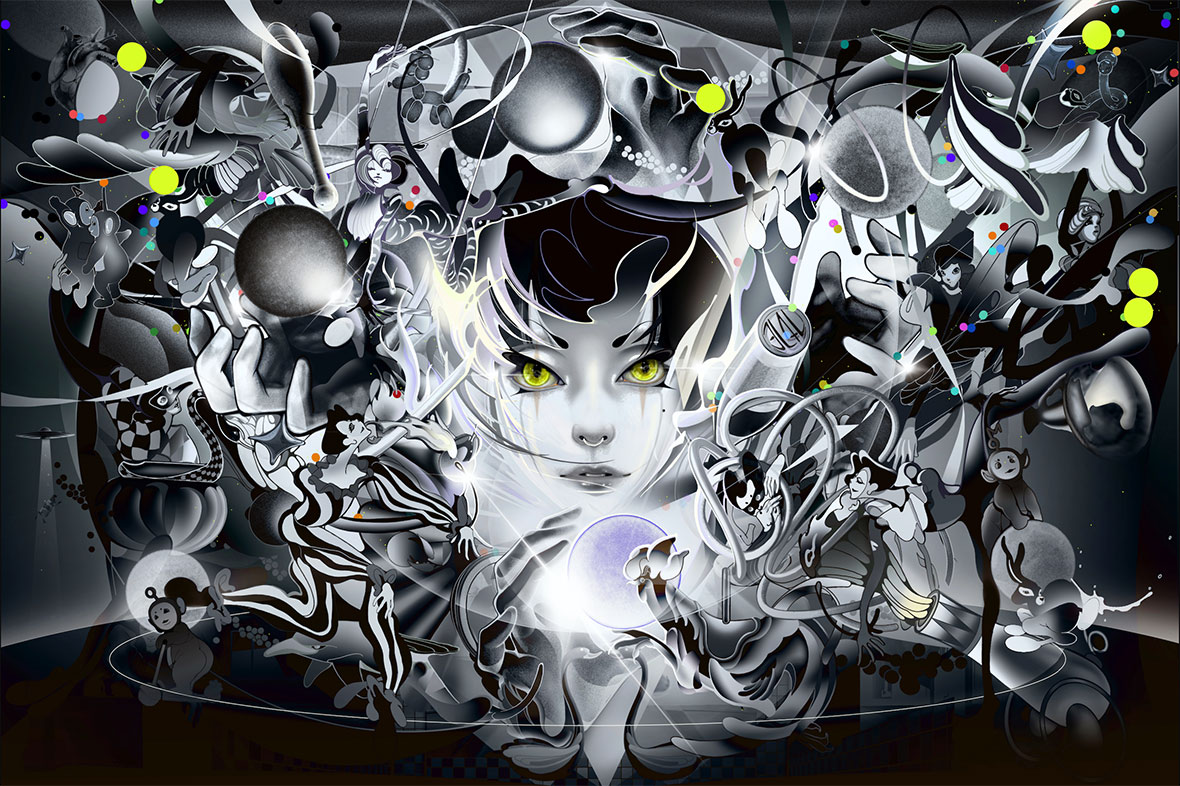
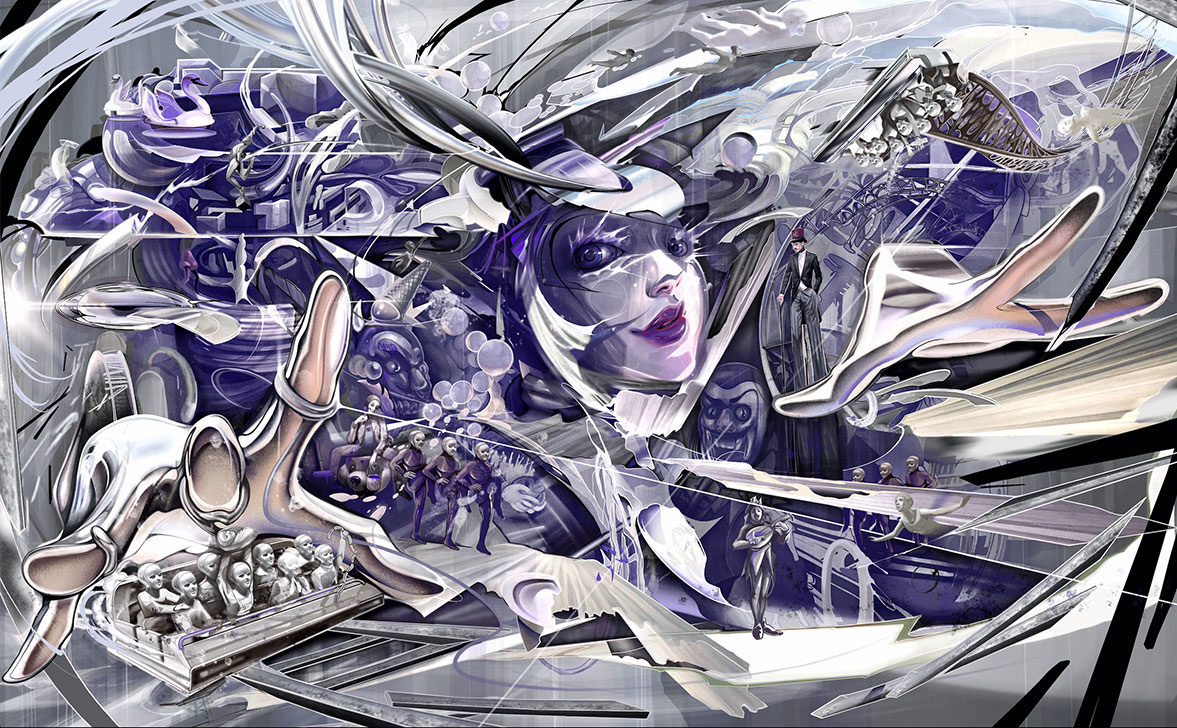
Without any context, it would be very difficult to place Fai’s artwork. Full of disparate motifs and styles, it looks easily like it could be from the US or Japan, and she’s firm about her work’s placelessness. “One of my favorite words is ‘nowhere’,” she smiles. The crisp lines, bold colors, and acrobatic characters resemble video games, anime, and Saturday morning cartoons more than anything Southeast Asian. “My art is not Thai at all. It comes from nowhere. It’s not from this world.”
Fai had tried out many styles over the years, only to return to an older aesthetic, one defined by crowded compositions drawing influence from memes, popular culture, and her street art roots. “The pandemic gave me the time to be alone and think things through thoroughly.” Before she starts painting she draws three or four digital sketches. Once the canvas is done, she photographs it and completes it digitally for conversion into an NFT. Sometimes she takes her final digital pieces and has them printed on metallic sheets. “The way the light changes on the metal gives it even more energy; it comes to life.”
Fawalai 的作品很难被简单定义。各种样式的图案,看起来明显受到许多日本或美国风格的影响,而她也很强调自己作品中这种“无地域性”,她笑着说:“我最喜欢的一个词是‘nowhere’。”清晰俐落的线条、大胆的色彩和杂技演员般的角色更像是视频游戏、动漫和周六早上的卡通人物,毫无东南亚艺术痕迹,“我的作品一点也不泰国。它没有特定的地域性,也并非来自这个世界。”
这些年来,Fawalai 尝试过多种不同的风格,在新冠疫情期间,她回归了一种传统的绘画风格,将网络热梗、流行文化和街头艺术糅合成纷繁复杂的构图,“疫情给了我时间独处,去认真思考问题。”在开始绘画之前,她会在电脑画三到四幅素草稿图;在画布上完成后,再拍摄下来,转换成 NFT 的数字格式。有时,她会将数字化的完稿作品印于金属板上,“金属表面的光线变化能赋予作品更多能量,看上去更生动,”她解释道。
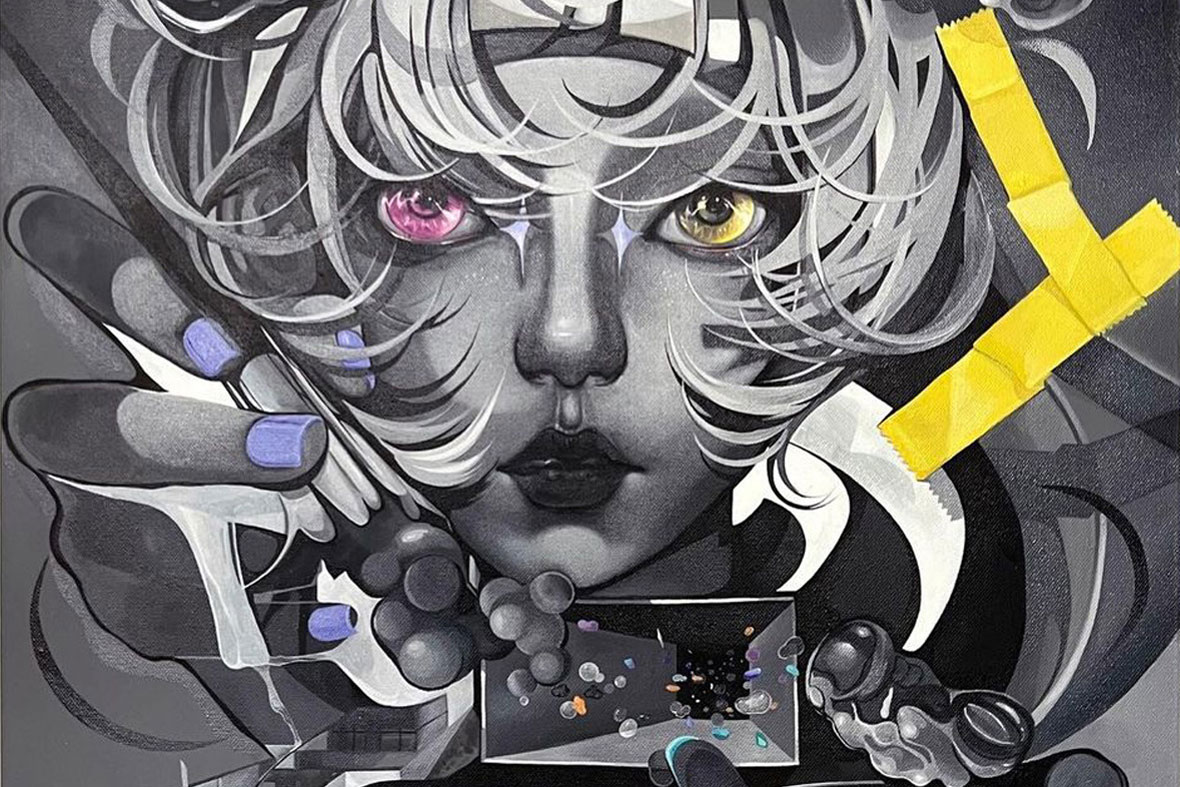
Energy is Fai’s primary focus. No matter how dense her work gets, and it gets extremely dense, there’s always a strong sense of movement, almost like its many parts are moving with the same choreography. It’s that performance element again: “Humans live life like a theater,” she says. “I want to be a medium to tell those stories and events.”
One relevant work in this new phase is called The Creator. It’s painted mainly in greyscales, with small, colorful splotches bubbling in the foreground visualizing an old-school artist coming into the new era. It’s personal, as she only started making digital art about a year ago with the rise of NFTs. “I didn’t care about digital before. I thought real art had to be painted. I believed in classic technique,” she explains. “But once I started experimenting, I realized there are no limits with digital. I can fully express what’s inside me this way.”
能量感是 Fawalai 在创作中的关注重点。无论是多么复杂的画面,当中总会透露出一股强劲的动能,仿佛各个部分正按照编排好的舞步在移动,而这又是她在作品中体现哑剧的方式,她说:“人的生活就像剧院一样,我想成为讲述这些故事的媒介。”
她近期的一幅相关作品名为《The Creator》(缔造者),这幅作品的色彩以深浅灰色为主,前景中点缀零星的几抹彩色,寓意一位跨入新时代的 Old-School 艺术家。这幅画与她本人有关,她大约一年前 NFT 兴起才开始创作数字艺术,“我此前对数字领域并不感冒,总觉得真正的艺术作品应该是手绘完成。我比较推崇传统的创作技巧,”她解释道,“但开始接触数字艺术后,我才发现这种方式可以让人摆脱各种限制,畅快淋漓地表达出内心的想法。”
Like our stories? Follow us on Facebook and Instagram.
Instagram: @mamablues
Contributor: Mike Steyels
Chinese Translation: Olivia Li

